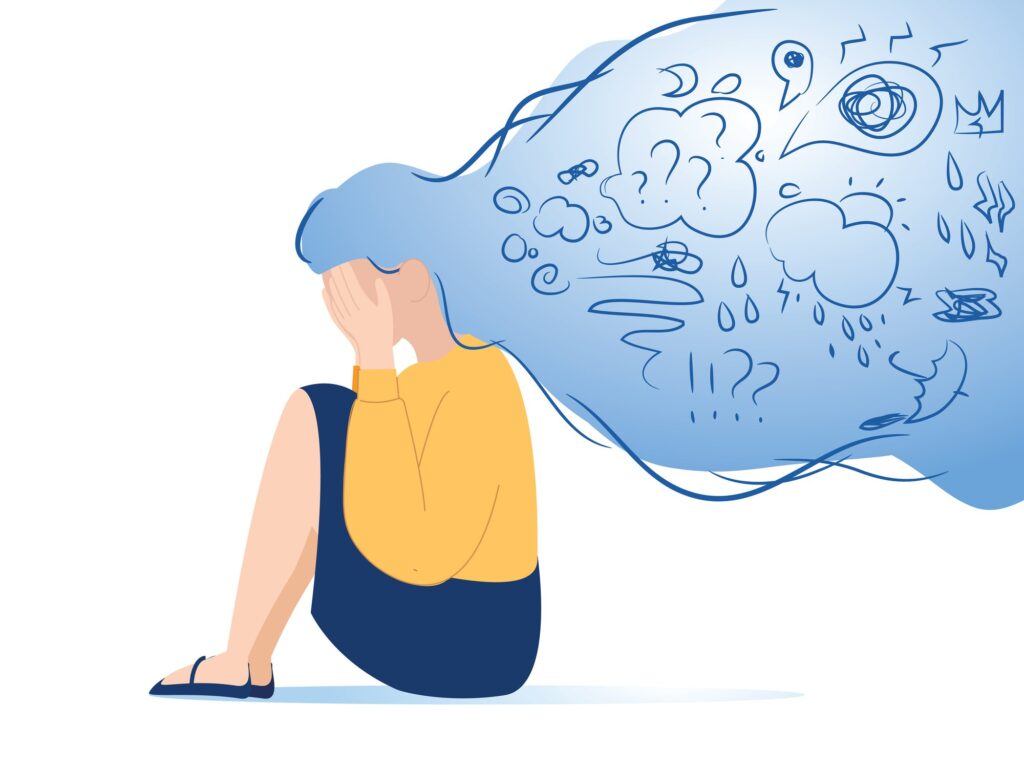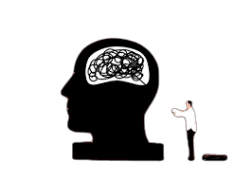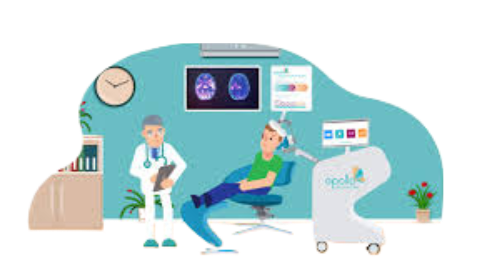Introduction: Understanding the Link Between Trauma and Mental Health
Trauma and stress are powerful forces that shape how we think, feel, and behave. When an individual experiences or witnesses distressing events such as abuse, violence, loss, or disasters, the mind and body may respond in ways that alter emotional balance and psychological stability. The DSM-5 (Diagnostic and Statistical Manual of Mental Disorders, Fifth Edition) identifies a specific category known as Trauma and Stressor-Related Disorders—conditions that develop following exposure to traumatic or highly stressful situations.

These disorders not only influence emotional well-being but can also affect physical health, social relationships, and overall quality of life. Understanding their types, causes, and treatments is essential for clinicians, educators, and anyone seeking to support mental health recovery.
Trauma and Stressor-Related Disorders in the DSM-5
In the DSM-5, trauma and stressor-related disorders form a distinct category characterized by exposure to actual or threatened death, serious injury, or sexual violence. This exposure can occur directly, by witnessing the event, or even indirectly—through learning that it happened to someone close.
Unlike anxiety or mood disorders, these conditions share one defining feature: a precipitating event. The traumatic experience acts as a trigger that sets off emotional and physiological responses.
Common symptoms include:
- Intrusive memories or flashbacks
- Avoidance of reminders
- Negative alterations in mood or thinking
- Heightened arousal (irritability, hypervigilance, startle responses)
This category encompasses several disorders, each reflecting different aspects of trauma’s impact—from acute stress reactions to long-term attachment disturbances in children.
The Four Main Types of Trauma
Not all trauma is experienced the same way. Experts generally classify trauma into four major types, each with unique psychological consequences.
1. Acute Trauma
Acute trauma results from a single, overwhelming event—such as a car accident, assault, or natural disaster. It can trigger intense fear, helplessness, or horror, often leading to short-term anxiety or shock. While some individuals recover naturally, others may develop post-traumatic symptoms if left unresolved.
2. Chronic Trauma
Chronic trauma occurs through repeated exposure to distressing situations, such as ongoing domestic violence, bullying, or long-term neglect. The prolonged nature of this trauma erodes trust, safety, and emotional stability, often leading to complex emotional disorders.
3. Complex Trauma
Complex trauma involves multiple, sustained traumatic experiences—often beginning in childhood—like abuse, abandonment, or family dysfunction. It impacts identity formation, self-esteem, and interpersonal relationships, and may result in complex PTSD or personality-related symptoms.
4. Secondary or Vicarious Trauma
Even those who don’t experience trauma directly can develop distress through exposure to others’ suffering. This form—common among therapists, first responders, or caregivers—is known as vicarious trauma. It reflects the emotional toll of empathic engagement with traumatized individuals.
Major Trauma and Stressor-Related Disorders
The DSM-5 outlines specific conditions under this category, each defined by particular patterns of response:
1. Post-Traumatic Stress Disorder (PTSD)
PTSD is perhaps the most recognized trauma-related disorder. It develops after exposure to severe trauma and is marked by intrusive memories, nightmares, avoidance, and persistent hyperarousal. Emotional numbness, anger, and sleep disturbances are also common.
PTSD affects not only war veterans but also survivors of accidents, assault, or natural disasters.
2. Acute Stress Disorder (ASD)
ASD occurs shortly after a traumatic event—usually within the first month—and shares many symptoms with PTSD. The main difference lies in duration: if symptoms persist beyond a month, the diagnosis often transitions to PTSD. Early therapeutic support can prevent chronicity.
3. Adjustment Disorders
Adjustment disorders arise when individuals struggle to adapt to major life changes—such as divorce, job loss, or relocation. Though less severe than PTSD, they cause significant emotional distress and functional impairment. Subtypes include anxiety, depressed mood, and mixed reactions.
4. Reactive Attachment Disorder (RAD)
Typically diagnosed in early childhood, RAD results from severe neglect or inconsistent caregiving. Children show inhibited, emotionally withdrawn behavior toward caregivers and struggle to form secure attachments.
5. Disinhibited Social Engagement Disorder (DSED)
Also rooted in early neglect, DSED is characterized by an excessive willingness to approach and interact with unfamiliar adults. The child’s boundaries and social awareness are impaired, reflecting early relational trauma.
6. Prolonged Grief Disorder
Recognized in the DSM-5-TR, this disorder emerges after the loss of a loved one, when grief persists abnormally long and interferes with functioning. It highlights how stressors beyond violence or threat can still produce trauma-like reactions.
Seven Recognized Disorders Related to Trauma and Stress
When clinicians refer to “seven trauma and stressor-related disorders,” they generally include:
- Post-Traumatic Stress Disorder (PTSD)
- Acute Stress Disorder (ASD)
- Adjustment Disorder
- Reactive Attachment Disorder (RAD)
- Disinhibited Social Engagement Disorder (DSED)
- Complex PTSD (recognized in ICD-11)
- Prolonged Grief Disorder
Each condition manifests differently but shares a link to overwhelming stress. Understanding these categories allows mental health professionals to tailor interventions based on type, duration, and developmental context.
Causes and Risk Factors
Trauma and stressor-related disorders develop through a complex interaction of biological, psychological, and environmental factors.
- Biological vulnerability: Genetic predispositions and differences in brain structures such as the amygdala or hippocampus influence stress responses.
- Early adversity: Childhood neglect, abuse, or chaotic family environments heighten vulnerability.
- Cognitive and emotional factors: Negative beliefs about oneself (“I’m unsafe” or “I’m powerless”) and maladaptive coping styles can reinforce trauma reactions.
- Social and cultural influences: Lack of community support, ongoing violence, or discrimination may prolong trauma symptoms.
Not everyone exposed to trauma develops a disorder—resilience, personality traits, and coping skills play protective roles.
Diagnosis and Assessment in Clinical Practice
Accurate diagnosis relies on detailed clinical interviews and standardized assessments. Clinicians evaluate the nature of the trauma, symptom patterns, and duration.
Common diagnostic tools include:
- Clinician-Administered PTSD Scale (CAPS-5)
- PTSD Checklist for DSM-5 (PCL-5)
- Structured Clinical Interviews (SCID-5)
A trauma-informed approach emphasizes safety, empathy, and empowerment during assessment. This ensures that evaluation itself does not retraumatize the patient.
Evidence-Based Treatments and Management
Effective treatment combines psychological therapies, social support, and sometimes medication. The goal is to help individuals process trauma, rebuild a sense of safety, and restore daily functioning.
1. Psychotherapy
- Cognitive Behavioral Therapy (CBT): Helps reframe distorted thoughts and reduce avoidance behaviors.
- Trauma-Focused CBT (TF-CBT): Integrates exposure and cognitive restructuring for trauma-specific issues.
- Eye Movement Desensitization and Reprocessing (EMDR): Uses bilateral stimulation to reduce emotional distress from traumatic memories.
- Exposure Therapy: Gradually confronts trauma cues in a controlled setting to reduce fear responses.
- Somatic Therapies: Focus on the body’s physiological response, helping release stored tension.
- Mindfulness-Based Therapies: Teach grounding and emotional regulation to manage flashbacks or anxiety.
2. Medication
Selective serotonin reuptake inhibitors (SSRIs) and other antidepressants can help manage anxiety, depression, and sleep disturbances. Medication is often used in combination with therapy.
3. Social and Family Support
A strong support system is one of the most protective factors in trauma recovery. Group therapy, community engagement, and family counseling can reinforce connection and trust.
The Psychological and Social Impact of Trauma
Trauma reshapes not only emotional regulation but also identity and relationships. Individuals may experience:
- Emotional numbing or detachment
- Difficulty trusting others
- Guilt, shame, or self-blame
- Social withdrawal
- Occupational or academic difficulties
On a societal level, trauma contributes to public health challenges such as substance abuse, violence, and intergenerational trauma. Understanding these dynamics encourages compassion rather than judgment.
Coping Strategies and Recovery Pathways
Healing from trauma is not about forgetting—it’s about learning to live safely with memories.
Key coping strategies include:
- Grounding techniques: Deep breathing, sensory awareness, or focusing on the present moment.
- Self-care routines: Sleep hygiene, balanced nutrition, exercise, and creative expression.
- Therapeutic journaling: Helps process emotions and identify triggers.
- Peer or support groups: Provide understanding and validation.
- Professional guidance: Consistent therapy fosters long-term resilience.
Recovery is highly individual. With proper care and time, many people experience post-traumatic growth—a strengthened sense of purpose, empathy, and personal empowerment following adversity.
Conclusion: Toward a Trauma-Informed World
Trauma and stressor-related disorders reveal the profound link between lived experience and mental health. The DSM-5 framework helps clinicians identify and treat these conditions with precision, yet true healing extends beyond diagnosis.
By fostering understanding, early intervention, and compassion, societies can become more trauma-informed—reducing stigma and empowering survivors to rebuild their lives with dignity and resilience.
Trauma may alter one’s path, but with awareness, therapy, and support, recovery is not only possible—it can lead to growth and renewed strength.



